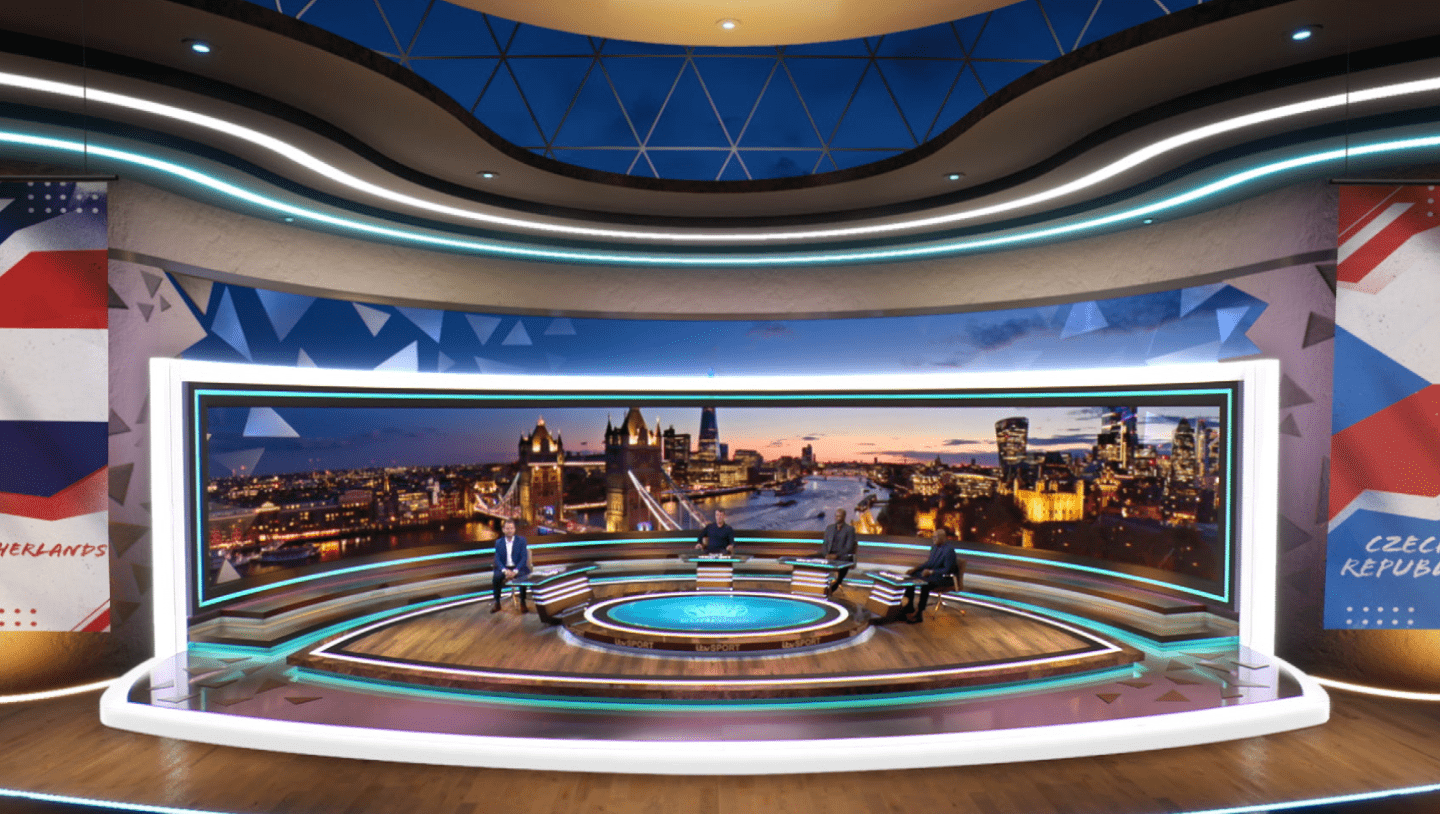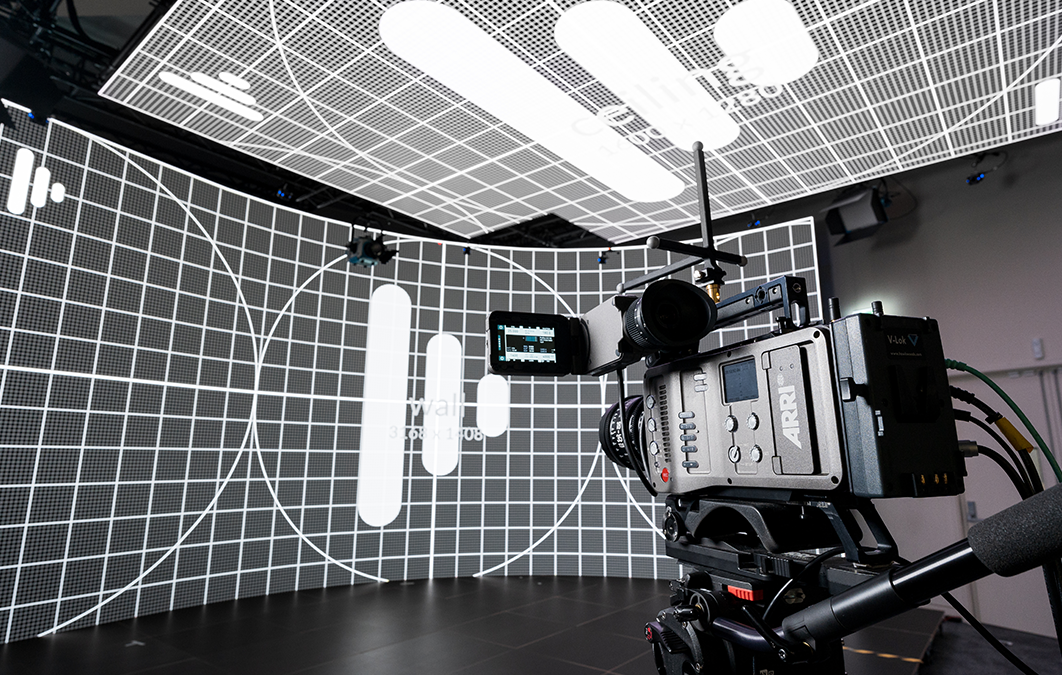5 Trends Driving a New Era of Broadcasting
Extended Reality
Broadcast

As extended reality (xR) technology continues to have a wide-reaching impact on the broadcast industry, we invited those that are pushing innovation in the field to our latest webinar as we explored what might come next.
Drawing on the expertise of virtual production specialists Nick Rivero, co-founder of MEPTIK, Nev Appleton, Director and co-founder of MOOV Limited and Andy Hook, Technical Solutions Director at White Light, as well as Disguise’s Product Director for Broadcast, Gideon Ferber, the webinar looked at the trends we’re seeing in broadcast today, and how they might develop in the future. Our Vice President of Broadcast, Phil Ventre, acted as moderator and was also on hand to offer technical insight throughout the discussion.
We’ve highlighted five key trends that were touched upon during the discussion:
1. Broadcasters need to develop a new workforce
As more and more broadcasters explore the benefits of xR production, we’re seeing a boom in demand for talented technicians and production staff that understand the unique combination of skills that are needed. Whilst, in the past, each element of a production required separate teams - for lighting, sound, video and more - the holistic nature of xR means teams with a more rounded understanding have a distinct advantage when creating stunning programmes.
Currently, many productions are hiring staff that have experience with gaming engines like Unreal Engine to complement the work of production staff with long-standing broadcast experience. There is still a major need for training and development of xR-focussed technical staff who understand every element of virtual production. Andy Hook shared that White Light, who have been working with xR for a long time now, are particularly focussed on grassroots collaborations with universities to ensure that the next generation of technical staff can confidently push the xR revolution forward.
Learn more about Disguise’s longstanding history with White Light
2. The AR explosion is here
One of the most interesting ideas that the panel touched upon is the potential for groundbreaking change in the coming years, pushed on by new technologies like augmented reality (AR).
Nick Rivero of MEPTIK is excited to discover the answer to one big question: how will our digital world and our physical world start to coincide more?
We’re already seeing elements of this as the idea of the metaverse begins to enter the public consciousness. This will lead to broadcasters engaging more directly with their audiences through virtual spaces. There will be more in-depth visual, digital experiences and more interconnectivity between our worlds.
Co-founder of MEPTIK
3. Broadcast productions can open up to new creative possibilities
According to the panel, the biggest change that is needed in the broadcast world is a fundamental rethink about how broadcasters approach their projects. xR technology has evolved so much that the panel believes it is capable of creating almost anything a client might imagine. The question broadcasters should no longer be asking is ‘what are we able to do with this tech?’, but instead ask ‘what would we like to do with this tech?’
By beginning their plans imagining their ultimate end goal, broadcasters open themselves up to new creative possibilities. The ability to create elaborate and stunning worlds through gaming engines like Unreal Engine, and to stack Disguise’s rx render nodes to provide the necessary power to realise these worlds, means that technology is no longer a barrier for those looking to use xR. The only thing holding them back is the limits of their own imagination.

4. xR brings bigger ideas to smaller sets
Disguise’s Broadcast Product Director, Gideon Ferber, was quick to point out that many immediately connect xR and virtual production with ambitious LED sets like those used on Disney’s The Mandalorian. “It’s important to acknowledge that set extension and other xR techniques mean it’s entirely possible to realise similar ideas in much smaller virtual production sets,” says Gideon.
The practical side of this was shown at the very beginning of the webinar, when host Phil Ventre revealed that he was not in a sports broadcast studio after all, but on an xR stage in Disguise’s London office. What had, a moment earlier, been a sprawling open office with industrial staircases, expansive brick walls and plenty of space to explore was in fact a small xR stage running on vanilla Unreal Engine graphics. The reveal showed that broadcasters don’t need a warehouse-sized volume to create high quality visuals that will impress viewers.
Discover the benefits of using xR in broadcast
5. Rethinking how broadcasters measure ROI
Nev Appleton of MOOV understands that some broadcasters are put off by the higher upfront costs that building an xR studio requires when compared to traditional green screen technology. He, however, believes the key is looking afresh at how we measure return on investment.
As a long-term investment, xR studios offer far more potential savings than green screen tech. In many cases, the amount of post-production work needed is cut to a fraction of the cost of productions using green screen, with the overwhelming majority of visuals realised in real-time, either on screen behind the presenters or overlaid using AR technology.
White Light’s Andy Hook is a fan of the flexibility an xR studio offers, too - enabling broadcasters to switch between productions and bring up entirely different sets at little more than the push of a button.
Redefining the future of storytelling
It’s clear that xR is turning the traditional broadcasting world on its head. As well as offering flexibility and big creative visions to broadcasters, it also provides a significant entry point to the metaverse and the future of audience engagement.
Nick Rivero believes that we’re just seeing the tip of the iceberg when it comes to xR’s potential. “The technology, in getting better, just falls into the background,” he says. “Now the boundaries are set by the content and the narrative. What I think is really exciting is that it allows us to start telling incredible stories. I really think it’s paving the way for the future.”